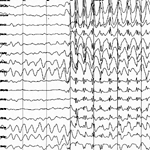 If you are exercising regularly as part of a weight loss program, then good for you. Studies have proven the value of exercise in reducing cardiovascular disease, preventing and treating diabetes, sustaining cognition, enhancing the immune system, and even reducing the risk of getting certain cancers. But narrowly considered, does exercise really help people lose weight? Not as much as you might think.
If you are exercising regularly as part of a weight loss program, then good for you. Studies have proven the value of exercise in reducing cardiovascular disease, preventing and treating diabetes, sustaining cognition, enhancing the immune system, and even reducing the risk of getting certain cancers. But narrowly considered, does exercise really help people lose weight? Not as much as you might think.
Most doctors and health agencies tell people that exercise is a key component of weight loss. The American Heart Association and the American College of Sports Medicine issued new guidelines in 2007 urging 60 to 90 minutes of physical activity a day. Add in kids, a full time job, and trimming your fingernails before they become unsightly claws, and you’ve got little time left for sleep. Is getting that much exercise an evidence-based solution?
A recent study, published this year by PLos One, looked at 464 overweight women, and divided them into four groups. Women in three of the four groups were asked to work out with a personal trainer for 72 minutes, 136 minutes, and 194 minutes per week, respectively, for six months. Women in the fourth group acted as a control and were told to maintain their usual routines. All the women were asked not to change their dietary habits.

 There’s a terrible scream down the hall, followed by a crashing sound, a summation of metal and drywall and flesh colliding. I run down the hall and open the door. I watch in horror as a body seizes on the unyielding floor. His back is arched, an invisible meat hook hoisting him sadistically upwards. He’s not breathing. Every muscle in his body is contracting simultaneously, and it seems as if his chest is about to explode. His eyes are buried deep in some internal possession, darting about, scanning an unseen inferno, and summoning him from this hell feels impossible. Powerless, I hold the back of his head as it repeatedly mashes my bony fingers into the floor. I use my free hand to dial 911. The blitz is contagious, and I struggle to keep my own voice unshaken. At some point I must have also yelled for help, because it is finally flowing into the room.
There’s a terrible scream down the hall, followed by a crashing sound, a summation of metal and drywall and flesh colliding. I run down the hall and open the door. I watch in horror as a body seizes on the unyielding floor. His back is arched, an invisible meat hook hoisting him sadistically upwards. He’s not breathing. Every muscle in his body is contracting simultaneously, and it seems as if his chest is about to explode. His eyes are buried deep in some internal possession, darting about, scanning an unseen inferno, and summoning him from this hell feels impossible. Powerless, I hold the back of his head as it repeatedly mashes my bony fingers into the floor. I use my free hand to dial 911. The blitz is contagious, and I struggle to keep my own voice unshaken. At some point I must have also yelled for help, because it is finally flowing into the room. I read an interesting article in one of my medical journals (
I read an interesting article in one of my medical journals ( Cicatrix
Cicatrix Sadly the great memoirist Frank McCourt has died from complications of metastatic melanoma.
Sadly the great memoirist Frank McCourt has died from complications of metastatic melanoma.